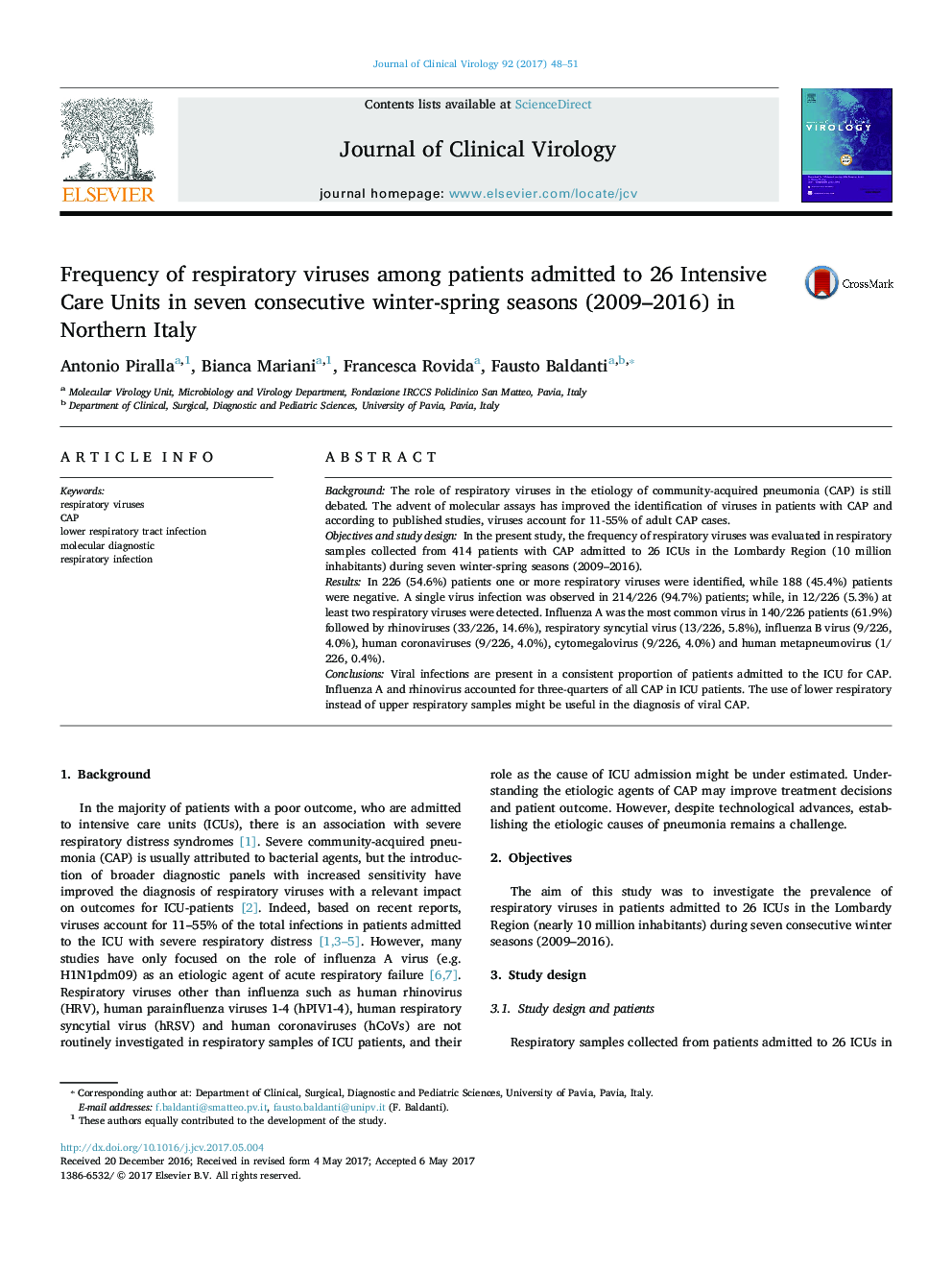| Article ID | Journal | Published Year | Pages | File Type |
|---|---|---|---|---|
| 5668176 | Journal of Clinical Virology | 2017 | 4 Pages |
â¢Viral infections are present in large proportion of ICU-admitted patients with CAP.â¢Influenza and rhinovirus accounted for a significant number of viral CAP episodes.â¢The use of LRT instead of URT samples might be useful in the diagnosis of viral CAP
BackgroundThe role of respiratory viruses in the etiology of community-acquired pneumonia (CAP) is still debated. The advent of molecular assays has improved the identification of viruses in patients with CAP and according to published studies, viruses account for 11-55% of adult CAP cases.Objectives and study designIn the present study, the frequency of respiratory viruses was evaluated in respiratory samples collected from 414 patients with CAP admitted to 26 ICUs in the Lombardy Region (10 million inhabitants) during seven winter-spring seasons (2009-2016).ResultsIn 226 (54.6%) patients one or more respiratory viruses were identified, while 188 (45.4%) patients were negative. A single virus infection was observed in 214/226 (94.7%) patients; while, in 12/226 (5.3%) at least two respiratory viruses were detected. Influenza A was the most common virus in 140/226 patients (61.9%) followed by rhinoviruses (33/226, 14.6%), respiratory syncytial virus (13/226, 5.8%), influenza B virus (9/226, 4.0%), human coronaviruses (9/226, 4.0%), cytomegalovirus (9/226, 4.0%) and human metapneumovirus (1/226, 0.4%).ConclusionsViral infections are present in a consistent proportion of patients admitted to the ICU for CAP. Influenza A and rhinovirus accounted for three-quarters of all CAP in ICU patients. The use of lower respiratory instead of upper respiratory samples might be useful in the diagnosis of viral CAP.
